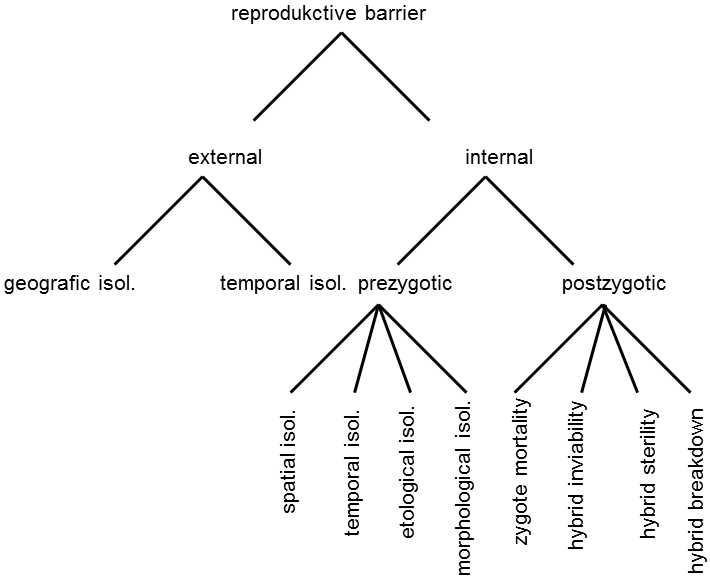XXI.4.2 The emergence of internal or external reproductive isolation barriers between parts of population is usually the first and most important step in the speciation of sexually reproducing species
While, in species without sexual reproduction, the most important and critical step in speciation is differentiation of the niches of the parent and daughter species, amongst sexually reproducing species the most critical and apparently the first step in speciation consists in reproductive separation of part of the population. In the absence of this separation, crossing between members of the older and newer forms constantly blurs the phenotype differences, so that differentiation of niches cannot occur. However, if reproductive separation occurs, and this need not be initially accompanied by the existence of phenotype differences, preconditions are created for the emergence of these differences in the future. Mechanisms facilitating reproductive separation of part of the population can basically be divided into external and internal reproductive isolation mechanisms (RIM) (Fig. XXI.5). External reproductive isolation barriers exist in the environment independent of the existence and biological traits of organisms. In contrast, internal barriers are directly or indirectly determined by the genotype of the organism and emerge and disappear as a result of genetic processes, most frequently as a consequence of mutations or recombinations.

Fig. XXI.5 Classification of the usual types of external and internal reproductive isolation barriers.
